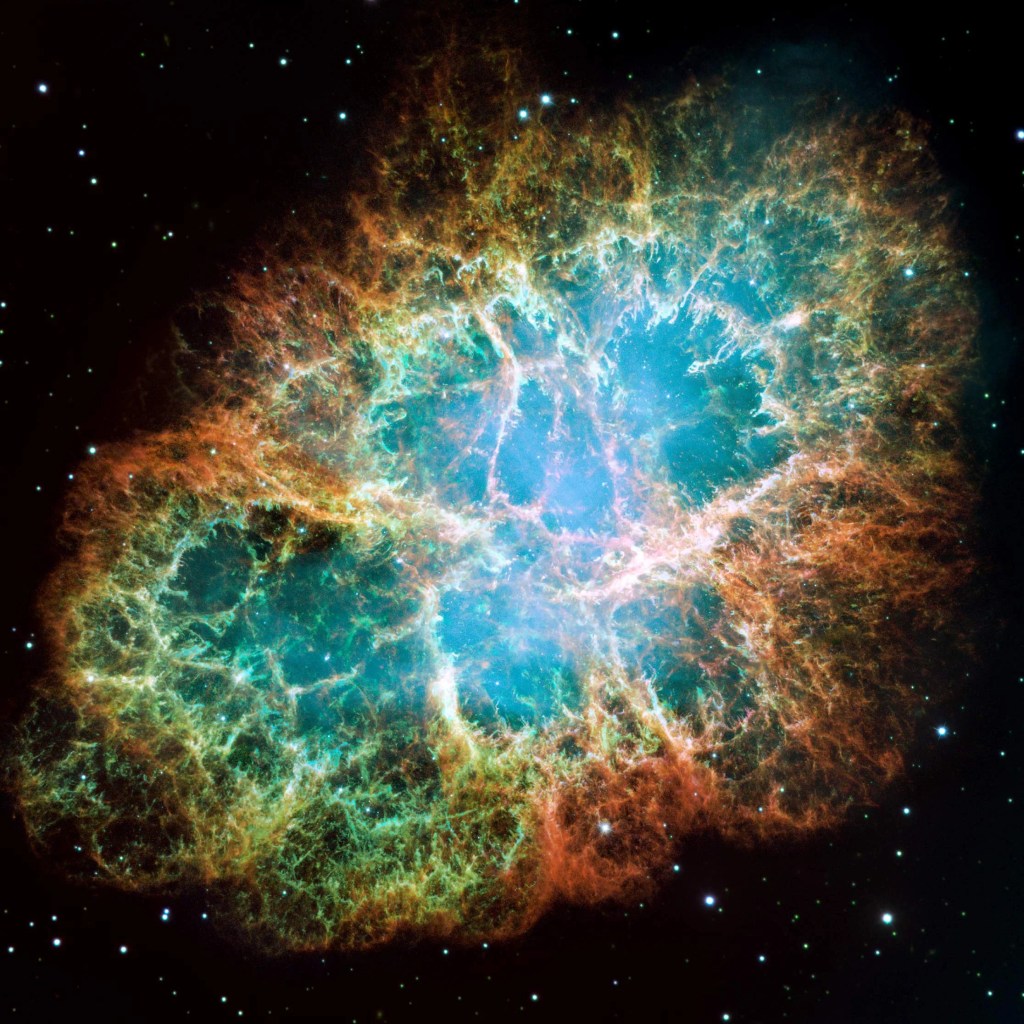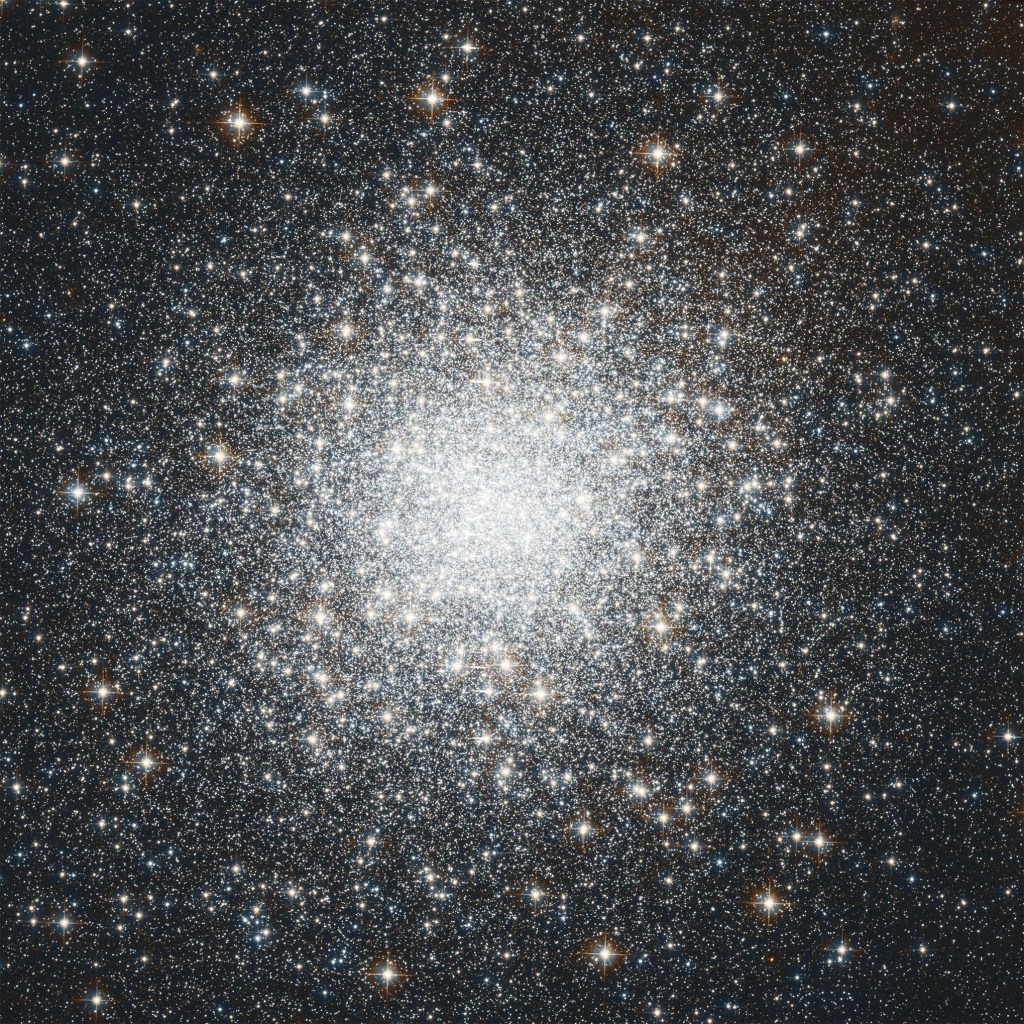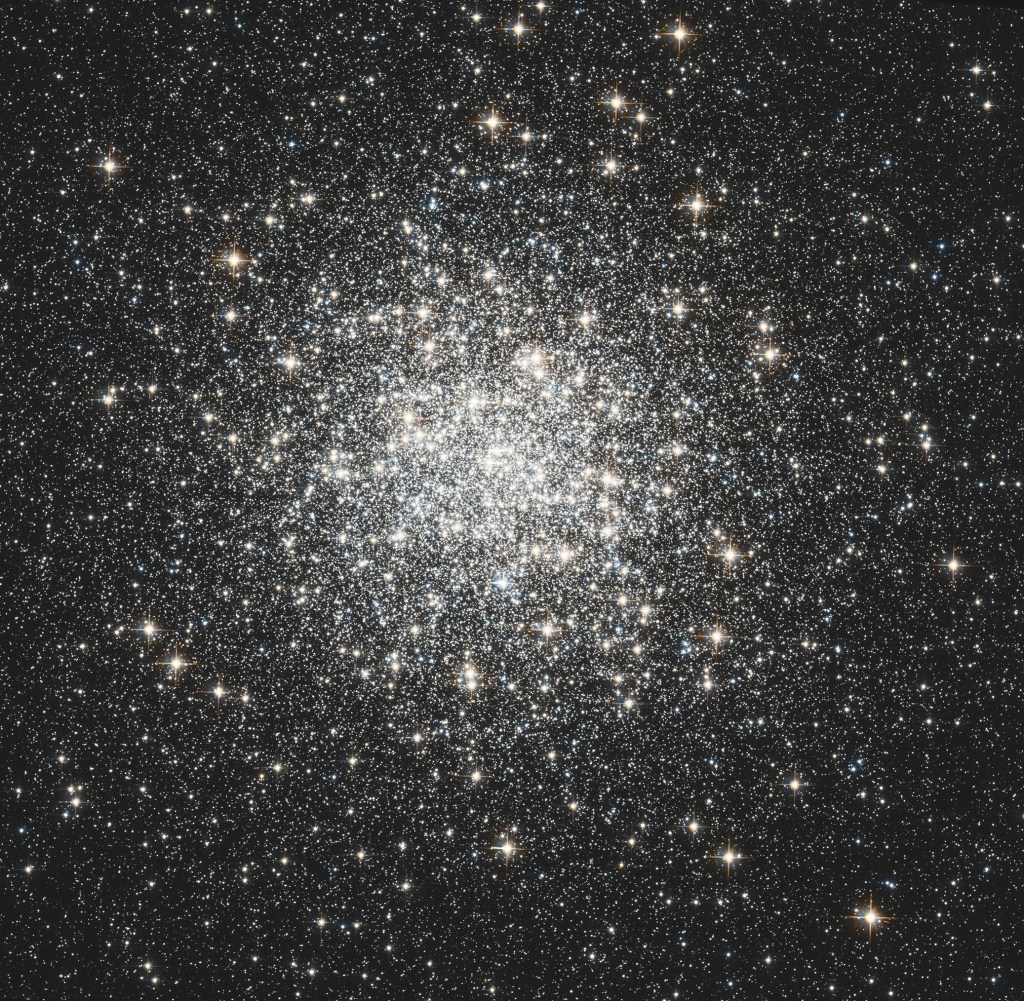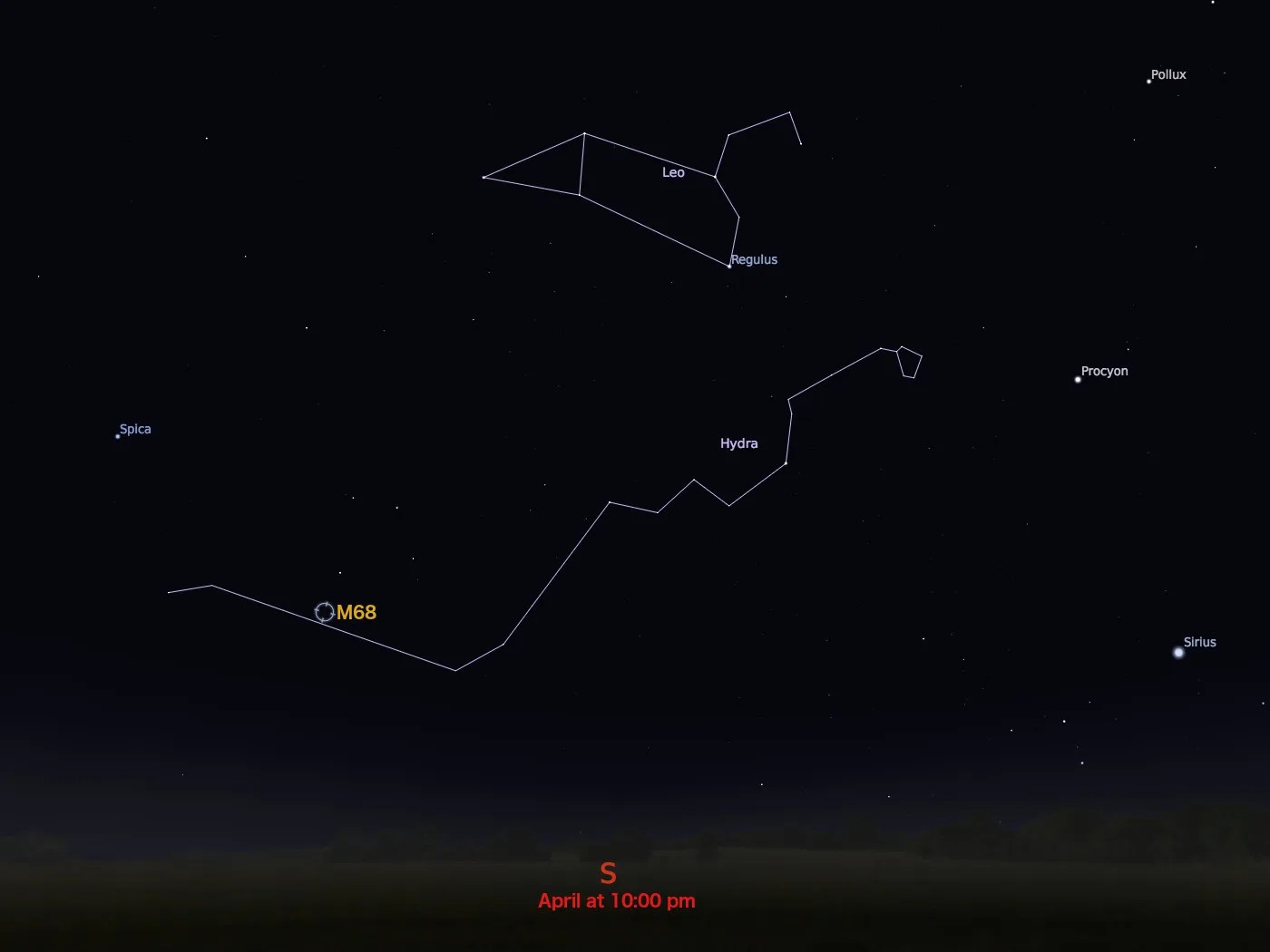Messier 68
Hubble captured this globular cluster’s core at visible and infrared wavelengths of light.
Distance
33,000 light-years
Apparent Magnitude
8.0
constellation
Hydra
object type
Globular Cluster
Discovered by Charles Messier in 1780, M68 is a dense collection of stars known as a globular cluster. Mutual gravitational attraction amongst the hundreds of thousands or even millions of stars in such a cluster keeps stellar members packed tightly together for many billions of years.
Roughly 150 of these objects reside in our Milky Way galaxy. On a galactic scale, globular clusters are relatively small. In M68’s case, its constituent stars span a volume of space with a diameter of little more than a hundred light-years. The disk of the Milky Way, on the other hand, extends over 100,000 light-years.
M68 is located 33,000 light-years from Earth in the constellation Hydra. It has an apparent magnitude of 8 and can be spotted with a pair of binoculars. The cluster is best observed during April.
This Hubble image of the core of M68 was created using observations at visible and infrared wavelengths of light.
For more information about Hubble’s observations of M68, see:
Explore Hubble’s Messier Catalog
The following pages contain some of Hubble’s best images of Messier objects.

Better known as the Crab Nebula, Charles Messier originally mistook Messier 1 for Halley’s Comet, which inspired him to create…

Hubble’s image of Messier 2 is comprised of visible and infrared wavelengths of light.

Messier 3 holds more than 500,000 stars.































